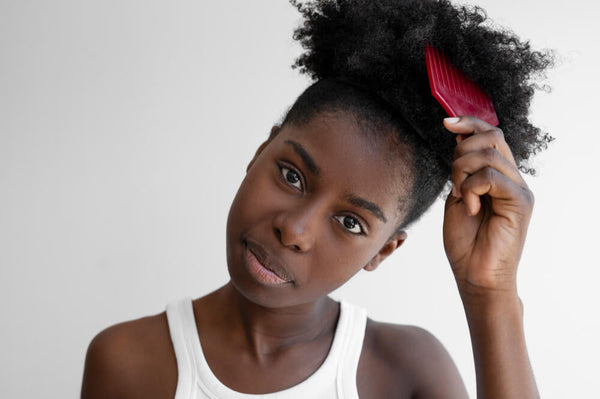That feeling is awful, isn't it? You’re looking in the mirror, watching your part get wider or seeing more scalp at your crown. It feels like your body is betraying you, and you’re left wondering, "Is this just... it? Do I have to accept this?"
I want to be straight with you. The word "cure" is a myth they sell you to get your hopes up. But "reversal"? Getting significant, real regrowth and stopping the thinning in its tracks? That is absolutely on the table. The answer isn't in a single bottle; it's in a strategy that digs deeper than your scalp.
What's Really Happening with Female Pattern Hair Loss?
Female Androgenetic Alopecia (AGA) is essentially a story of slow, quiet sabotage. Your follicles, thanks to a genetic sensitivity, start overreacting to hormones like DHT. This doesn't make your hair "fall out" in clumps. Instead, the follicles get tired and slowly miniaturize—producing thinner, weaker, shorter hairs with each growth cycle until they just... stop.
But here’s what most people miss: your genetics load the gun, but your lifestyle and health pull the trigger. Underlying inflammation, nutrient deficiencies, and hormonal chaos are what fuel this process from a possibility into your reality.

Why Topical Treatments Are Like Putting a Band-Aid on a Broken Arm
Look, minoxidil (Rogaine) can help some people maintain what they have. But if your hair loss is being driven by insulin resistance, a tanking thyroid, or severe inflammation, no amount of topical liquid is going to fix that. You’re just misting the leaves of a plant with a rotten root system.
The old model of care stops at the symptom. They see thinning hair, so they give you a topical treatment. It’s a surface-level fix that leaves you dependent, often with disappointing results.
Our Approach: How We Actually Fight Back
We do things differently. We don’t just ask, "What’s happening on your scalp?" We ask, "Why is this happening inside your body?" Our functional medicine approach is built on being detectives, not just dispensers.
Step 1: Uncover the Root Cause. This is non-negotiable. We use comprehensive lab testing to look under the hood. We check your:
-
Hormone Panels: In addition to estrogen and progesterone, we examine cortisol, thyroid and insulin.
-
Nutrient Levels: Do you have any kind of deficiency of Iron, Vitamin D or Zinc? These supplements are crucial for your hair growth.
Step 2: Use Advanced, Targeted Treatments. Once we know the "why," we try to solve the problem in every way..
-
PRP (Platelet-Rich Plasma) Therapy: We use your own healing growth factors to stimulate the follicles.
-
Medical-Grade Nutraceuticals: We use pharmaceutical-grade supplements to correct the specific deficiencies we find - no generic one-size-fits-all solution.
This is how we change the entire environment your hair grows in.
Let's Bust The Myth That's Holding You Back
You’ve probably heard: "It's just genetics, you have to accept it." That is the most disempowering, inaccurate myth out there. While you can't change your genes, you can dramatically influence how they express themselves. By addressing the underlying triggers—the inflammation, the nutrient gaps, the hormonal shifts—we can calm the reaction and help your follicles thrive again.
Your Hair Loss is a Signal, Not a Sentence
This journey is more than cosmetic. That thinning hair is often your body’s first, most visible cry for help. Listening to it can be the start of not just saving your hair, but reclaiming your overall health.
You have real options beyond a lifetime of minoxidil and wishful thinking. The key is acting now, before more follicles go dormant for good.
If you're in Atlanta and tired of guessing, let's get you real answers. Book a Hair Therapy Evaluation with us for just $99 and we’ll build a plan to actually address the root cause of your thin hair.














